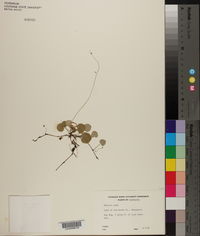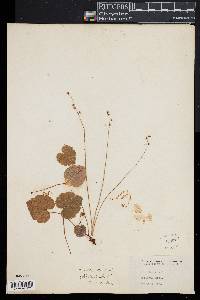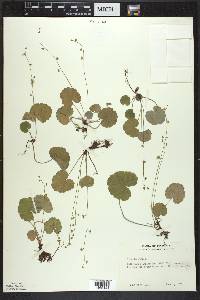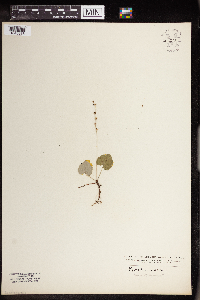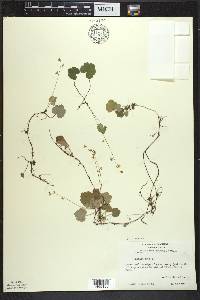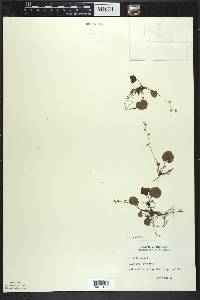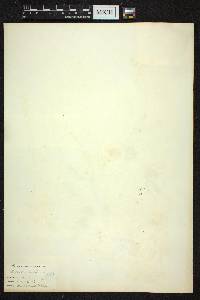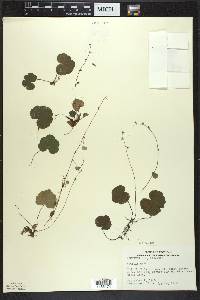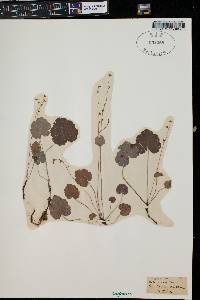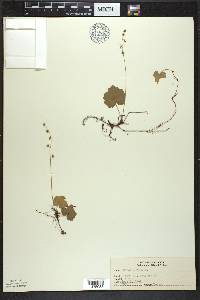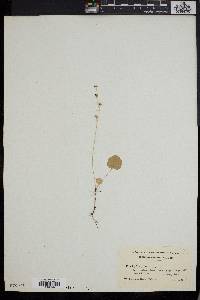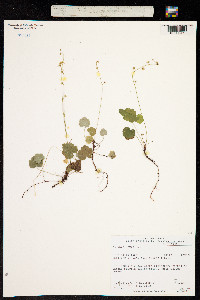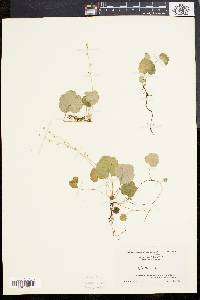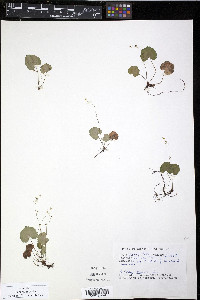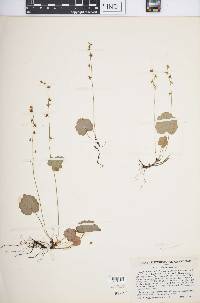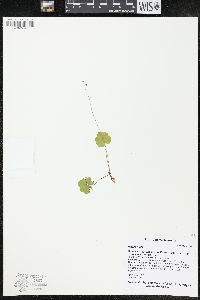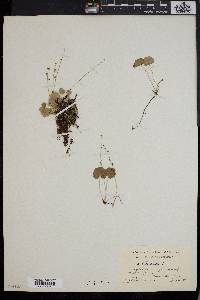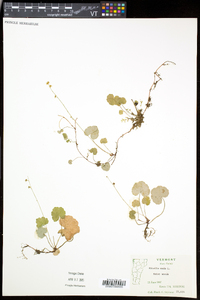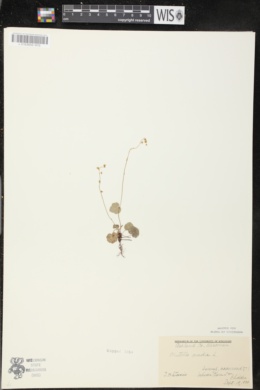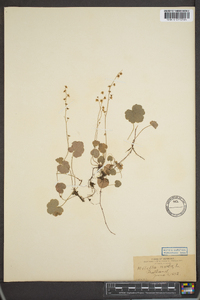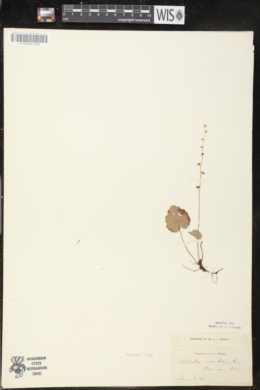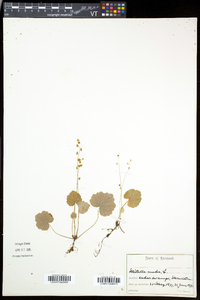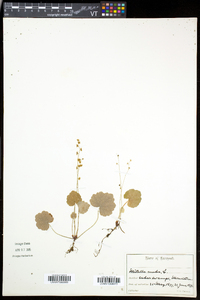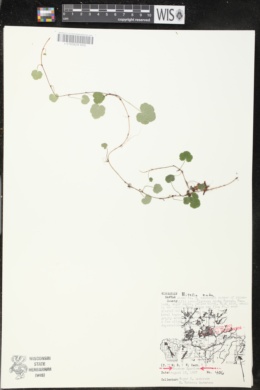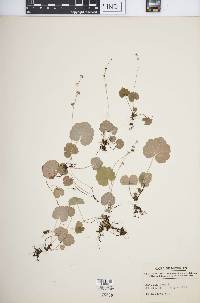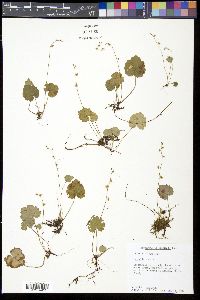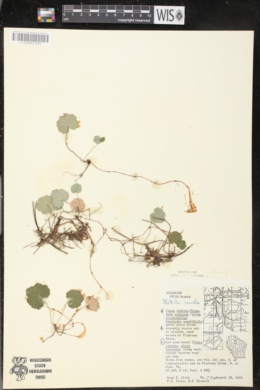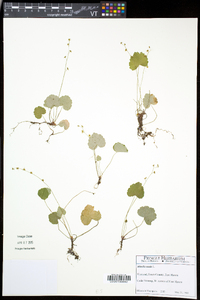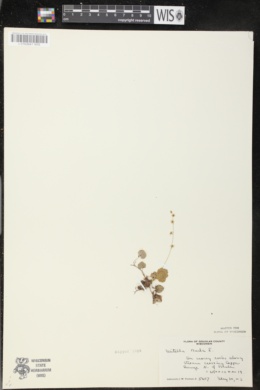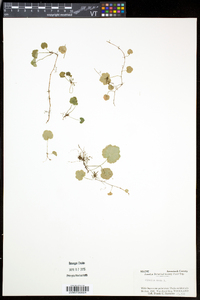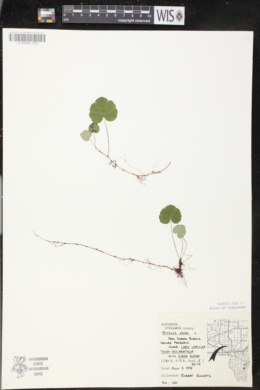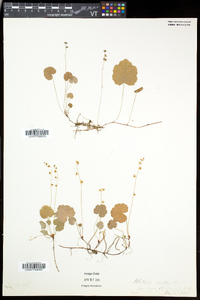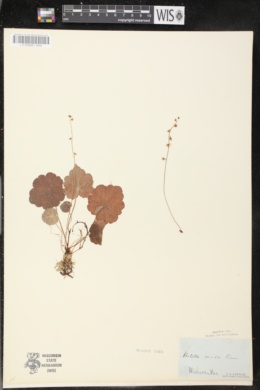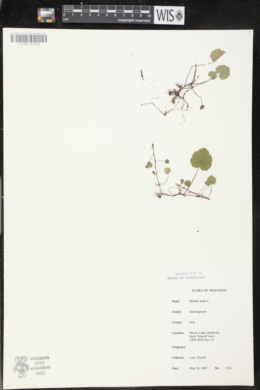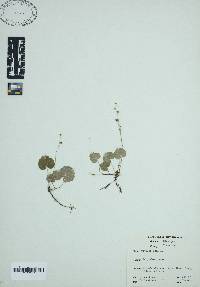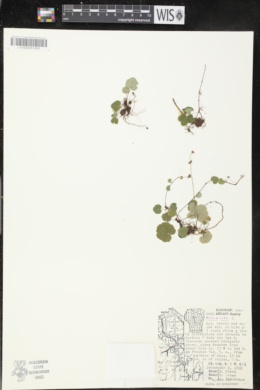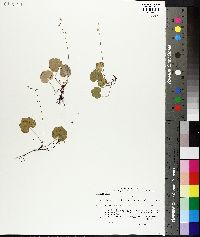Mitella nuda
|
|
|
|
Family: Saxifragaceae
Bare-Stem Bishop's-Cap
[Mitella cordifolia Lam., moreTiarella unifolia Retz.] |
Plants usually stoloniferous. Flowering stems (2-)6-20(-25) cm. Leaves: petiole 1.2-8(-10) cm, short stipitate-glandular, longer hairs usually retrorse, sometimes spreading, white; blade cordate to reniform, ± as long as wide, (0.4-)1.1-4.7(-8) × (0.4-)1.2-4.8(-7.5) cm, margins unlobed or shallowly 3-lobed, singly crenate, irregularly ciliate, apex of terminal lobe obtuse to rounded, surfaces sparsely glandular-puberulent and glandular-hirsute; cauline leaves absent or 1, proximal, sessile or subsessile, blade 0.4-1.6(-2.8) × 0.8-2.6 cm. Inflorescences 1-3(-6), remotely (1-)2-15-flowered, 1 flower per node, not secund, long stipitate-glandular proximally, short stipitate-glandular distally. Pedicels 1-6 mm, short stipitate-glandular. Flowers: hypanthium broadly campanulate, 1.5-2.5 × 2.5-3.5 mm; sepals spreading or recurved, greenish white, ovate to triangular-ovate, 1.5-2.4 × 1-1.8 mm; petals greenish yellow or greenish white, 9-11-lobed, (2-)3.5-5 mm, lobes linear, lateral lobes spreading; stamens 10, opposite and alternate with sepals; filaments white or greenish white, 0.3-0.5 mm; anthers 0.2-0.3 × 0.2-0.3 mm; ovary 1/3-1/2 inferior; styles erect or spreading, cylindric, 0.4-0.6 mm; stigmas unlobed. Seeds dark reddish brown or blackish, 0.8-1.2 mm, nearly smooth. 2n = 14, 28. Flowering May-Aug. Moist to wet woods, damp coniferous woods, northern hardwood forests, thickets, swamps, stream banks, bogs; 0-3500 m; St. Pierre and Miquelon; Alta., B.C., Man., N.B., Nfld. and Labr., N.W.T., N.S., Nunavut, Ont., P.E.I., Que., Sask., Yukon; Alaska, Conn., Idaho, Iowa, Maine, Mass., Mich., Minn., Mont., N.H., N.Y., N.Dak., Pa., Vt., Wash., Wis.; e Asia. D. E. Moerman (1998) reported that the Cree Indians of Saskatchewan used the crushed leaves of Mitella nuda to treat earaches.
Perennial herb 5 - 20 cm tall Leaves: basal, nearly round to kidney-shaped with a heart-shaped base, shallowly lobed, toothed, hairy above, slightly hairy beneath. Flowers: borne two to thirteen on an inflorescence (raceme), yellowish green, 1.5 - 12.5 cm long, with 1 - 5 mm individual flower stalks, five pinnately fringed petals 3 - 5 mm long, and ten stamens. Fruit: a two-beaked capsule splitting open at maturity, containing a few smooth, shiny black seeds 1 mm long. Flowering stem: very slender, glandular, hairy near base, having zero or one stalkless, egg-shaped, and few-toothed leaves. Similar species: Mitella diphylla has a pair of opposite leaves on the flowering stem and white flowers with petals 2 mm long. i>Sullivantia sullivantii, Tiarella cordifolia, Heuchera americana, and Heuchera richardsonii lack fringed petals. Flowering: May to June Habitat and ecology: Bogs. Occurence in the Chicago region: native Etymology: Mitella is the diminutive of the Greek word Mitra, meaning cap, referring to the form of the young fruit. Nuda means naked, referring to the usually leafless flowering stalks. Author: The Morton Arboretum Stems 0.5-2 dm, hairy below and glandular throughout; basal lvs rotund to reniform with cordate base, obscurely lobed, crenate, hairy; cauline lf 1 or none, ovate, sessile, few-toothed; racemes 2-10 cm; pedicels 1-5 mm; fls yellowish-green; pet 3-5 mm, very deeply pectinate- fimbriate, with divergent segments; seeds few, black, shining, 1 mm; 2n=28. Bogs and wet woods, usually in moss; Lab. to Mack., s. to Pa., Mich., Minn., and Mont.; e. Asia. May, June. Gleason, Henry A. & Cronquist, Arthur J. 1991. Manual of vascular plants of northeastern United States and adjacent Canada. lxxv + 910 pp. ©The New York Botanical Garden. All rights reserved. Used by permission. |


